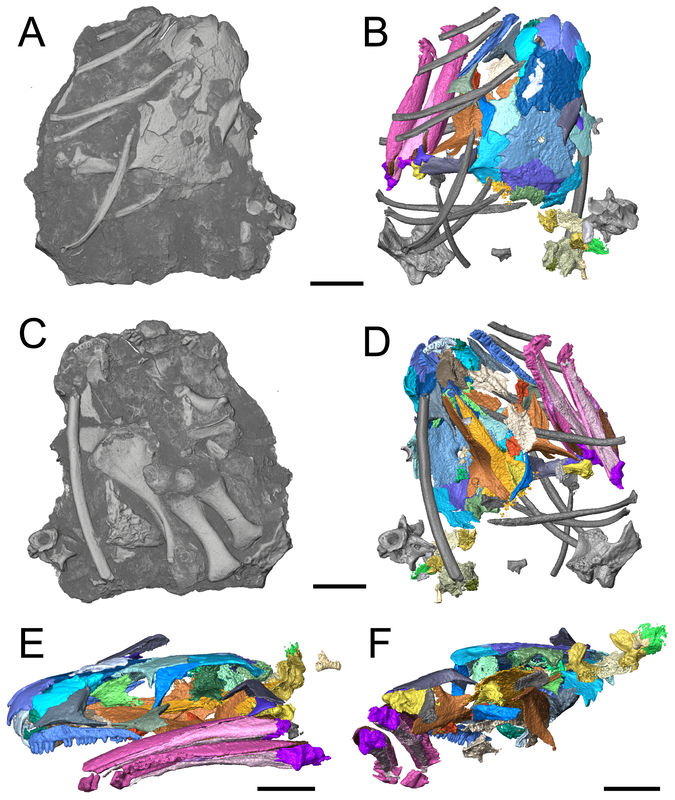Computed tomography (CT)
|
Usually CT machines come to mind when thinking of medical practice and examining sports injuries, but the same x-ray technology that allows doctors to see inside of the human body can also allow paleontologists to see inside of fossils. Scans produce a digital stack of 2D slices that are then sandwiched together to create the 3D renderings that you can see.
Most of the CT work that our lab does comes from data sampled through a neutron beam, rather than traditional x-rays, gathered through an ongoing collaboration with Dr. Joseph Bevitt and the Australian Nuclear Science and Technology Organisation (ANSTO) near Sydney. You can read more about the nuances of this method on our lab research page (where I also wrote the blurb on methods). Like histology, CT analyses allow us to gain additional information from our finite amount of fossil material. In this regard, the greatest area of paleontology that is grown by these studies pertains to the brain, normally a region that is hard to study based on external structures alone. |



